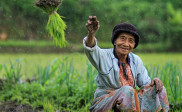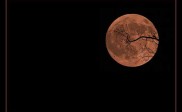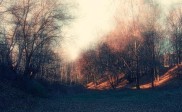Zoo Photography: Tips and Techniques
A visit to the local zoo provides huge opportunities to a photographer. Zoos are a great location to photograph wildlife, as there’s a concentration of exotic animals and birds at every acre and has beautiful surroundings. Zoo photography helps in improving reflexes as a photographer and most importantly teaches the virtue of patience.
Manners and Etiquette:
Keep in mind that how you behave does not just affect you, it reflects upon every person with a camera.
- Do not disturb animals by yelling, making gestures or throwing food at them. Do not do anything to make them look at you.
- Do not block the view of others.
- Do not climb the barriers or fences for taking close-up shots.
What will you need:
Don’t pack a lot of heavy gear with you, because you will mostly be doing a lot of walking.
- Either an SLR/DSLR with a telephoto lens (300mm) or a point and shoot camera with a high zoom capability is preferable.
- Consider taking a tripod or a monopod with you.
- Carrying a lens hood is important because sometimes you will be shooting into the sun and at times you will be shooting through glass, in such situations having a lens hood might be handy.
- Extra batteries, film/memory card.

Photo by Lipi Bharadwaj
Tips and Techniques:
- Shooting through a fence
The biggest challenge during zoo photography is shooting through a fence or cage. To get shots through a fence, get as close to the fence as possible. This can be done by using a telephoto lens. Set a wide aperture to get a shallow depth of field. Keep your focus on the animal behind the fence. This way you can avoid getting the fence in your image.
- Shooting through the glass
Shooting through glass can be a problem. Try to get in close with the glass, if possible, wipe the glass with a cloth. Look for a spot with comparatively less scratches than the other spots, use a lens hood to avoid the reflections, you can also use your hand to do this, just make sure that your hand acts as a hood and does not cover the glass of the lens. Shoot at right angles to the glass. This will largely help to avoid the reflections onto and off the glass.
- Get in close
This creates a feeling of intimacy with the subject. This way you will also be able to capture great details. Use a lens with a long focal length to avoid the problem of distance between the photographer and the subject of interest. Tightly framing and cropping the animal’s face or body not only helps in creating an impact but also helps to eliminate distracting elements which might make their way into the photograph.
- Focus on the eyes
Focusing on the eyes creates a sense of personal connection between your subject and the viewer of the image.
- Point of Interest
Before photographing think what is it that interests you about the subject. Is it the color of the animal, its surroundings or the expression of the subject? This is important because that way you will be able to identify the points of interest and it will help you to determine on what aspect of the subject you want to focus and how to approach the shot.

Photo by Lipi Bharadwaj
- Context
Take a few minutes to survey the animal’s surroundings. The best part of photographing in a zoo is that you get to shoot a variety of animals in a concentrated area but it also has many other man-made distracting elements. Hence, it is important to see which spot or angle would help to make it look ‘natural’.
- Point of view
Get down to the eye level of your subject. This also helps in creating a sense of intimacy and closeness. To do this you need to get down on your knees and try shooting from different angles.
- Capture images of people
People, especially kids, watching the animals are also a great subject to photograph. Don’t just focus only on the animals, also focus on the people around you. The reactions and emotions of people watching the animals would make great images.

Photo by Lipi Bharadwaj
- Look for humorous situations
Keep your camera to your eye and wait! Animals do the funniest of things, for example, a monkey might point at you or try to steal someone’s water bottle.
- Patience
Be patient! Occasionally you will get that perfect shot the moment you decide to photograph, but generally, you will have to wait for the perfect pose and the perfect moment. Spend time around your subject; you will get to see it in different positions and with different expressions.

Photo by Lipi Bharadwaj
Keep all these points in your mind and you will have a great experience and get some amazing images..




awesome article Lipi
A student!!!!!!!!!!! Looks like a professional already. Good article with good photoshots by the writer make a good reading.
Great information! I am very fond of the wildlife photography and this post is being very helpful for me in that case,thanks for sharing.
Its important to know the techniques and rules of zoo photography as while photographing it should not irritate animals in zoo. I think zoo management should hang a board of few rules for zoo photography and would also look after it whether visitors are following it or not.